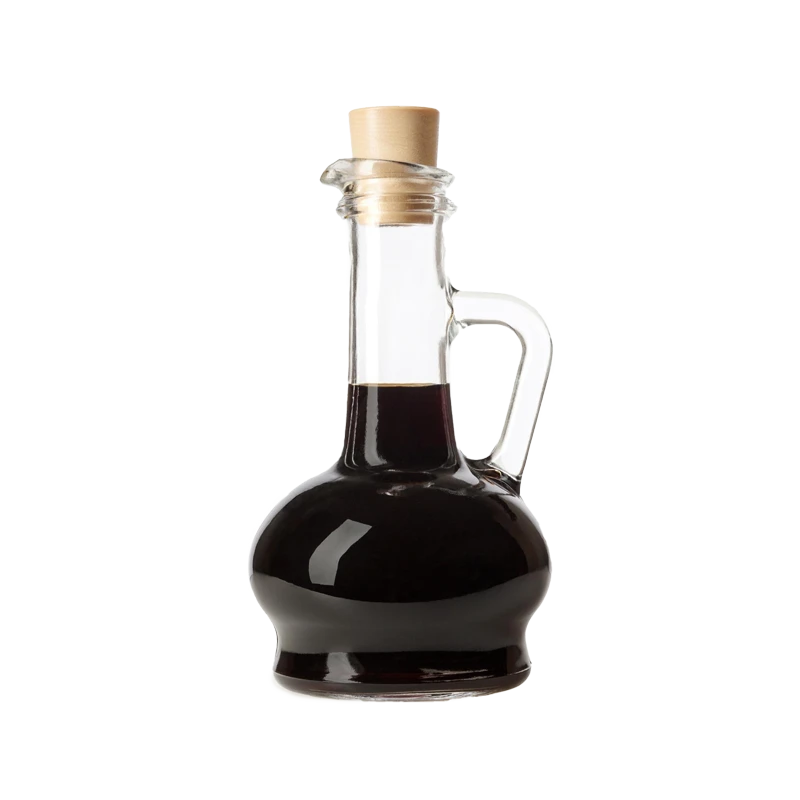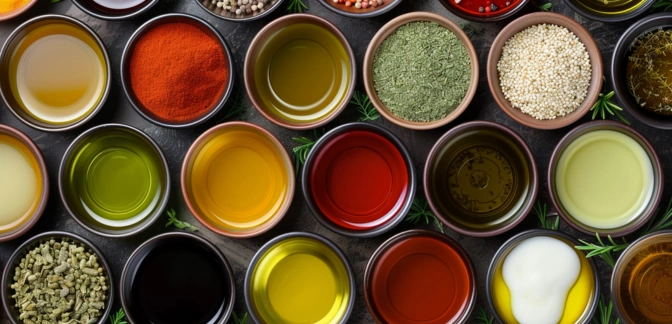Balsamic Vinegar — Nutrients, Health Benefits, And Shopping Tips

Written by Listonic Team
Last update on September 4, 2024
Nutrients
Nutrition facts
Amount per 100 g
Calories
🔥 88 kcal
| Nutrition per: 100 g | Value | % Daily Value* |
|---|---|---|
| Carbs | 17 g | 6.18% |
| Fiber | 0 g | - |
| Sugars | 15 g | 30% |
| Glycemic Index | 30 | - |
| Protein | 0 g | - |
| Sodium | 23 mg | 1% |
| Total Fat | 0 g | - |
*The % of Daily Value (DV) tells you how much a nutrient in a serving of food contributes to a daily diet. 2,000 calories a day is used for general nutrition advice.
30
🟢 Low Glycemic Index
Key takeaways
Health benefits
- Rich in antioxidants, which help protect the body from free radicals and reduce the risk of chronic diseases.
- Supports digestive health by stimulating the production of digestive enzymes, aiding in digestion.
- Promotes heart health by improving cholesterol levels and supporting healthy blood pressure due to its acetic acid content.
- Contains antimicrobial properties, which can help fight off infections and improve overall health.
- May aid in weight management by enhancing satiety and reducing overall calorie intake.
Health risks
- Tooth enamel erosion due to its acidity, which can weaken and erode tooth enamel over time, especially with frequent use.
- Gastrointestinal discomfort such as heartburn or acid reflux, particularly in individuals sensitive to acidic foods.
- High sugar content in some commercial varieties, which can contribute to weight gain and blood sugar spikes.
- Possible sulfite sensitivity as some balsamic vinegars contain sulfites, which can cause allergic reactions or respiratory issues in sensitive individuals.
How to choose balsamic vinegar
When selecting balsamic vinegar, look for a dense, syrupy consistency and a deep, rich hue that suggests a lengthy aging process. A quality balsamic vinegar should have a good balance of sweetness and acidity, which enhances its flavor profile.
Avoid balsamic vinegars that are too thin or lack depth in color, as these qualities often indicate a product that hasn't been aged properly. Also, be wary of vinegars labeled as 'balsamic vinegar of Modena' that list vinegar and caramel color as primary ingredients instead of grape must.

How to store balsamic vinegar
Balsamic vinegar should be stored in a cool, dark place, such as a pantry or cupboard. Keep the bottle tightly sealed to preserve its rich flavor and aroma. Properly stored balsamic vinegar can last for years without losing quality.
Direct sunlight and heat can degrade the quality of balsamic vinegar, so these should be avoided. Refrigeration is not necessary and can actually alter its consistency. Always use clean utensils to avoid introducing contaminants into the bottle.
✅ Extra Tip
How long does it last?
Balsamic vinegar can last indefinitely when stored in a cool, dark place. Over time, it may thicken and develop sediment, but it remains safe to consume. For the best quality, use it within 3-5 years.
What to do with leftovers?
Leftover balsamic vinegar can be used in many creative ways. Drizzle it over salads for a tangy dressing or reduce it into a balsamic glaze to drizzle over grilled vegetables, meats, or even desserts like strawberries and ice cream.
Use balsamic vinegar as a base for a marinade, especially for chicken, pork, or tofu, where it adds a rich, complex flavor. It can also be mixed into sauces for a sweet and sour contrast or added to stews for depth. If you have a lot of balsamic vinegar, consider making a batch of balsamic vinaigrette to keep on hand for salads and marinades. Balsamic vinegar can also be used in cocktails or mocktails, where it adds a unique twist to the flavor profile.
👨⚕️️ Medical disclaimer
Discover products from other categories
Listonic Team
Fact-checked
Our editorial team checked this article to make sure it was accurate at the time of publishing it.
Get the top-rated shopping list app on your phone!







